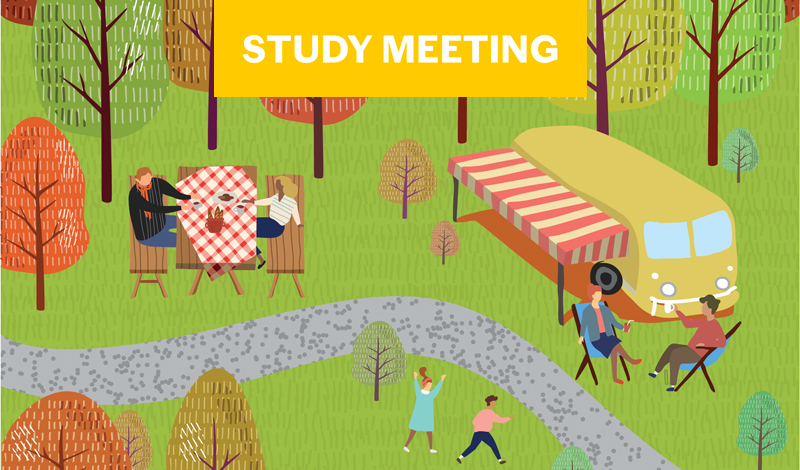The study material below is adapted from The Wisdom for Creating Happiness and Peace by Ikeda Sensei. You can purchase the revised edition of part one at bookstore.sgi-usa.org.
OPTION #1: We Are Enriched by Helping Others [7.5]
Chapter 7: Happiness for Both Ourselves and Others
While sowing the seeds of happiness in the life of one person after another may seem like a long, roundabout process, it is actually the most fundamental groundwork for changing our planet as a whole.
Although it takes a long time for a tree to grow from a tiny seed, when it does grow big and tall, it will bear abundant flowers and fruit, and people will find rest in its cool shade. Each of us must strive to become such a tall tree.
Nichiren Buddhism is the path for attaining happiness for ourselves and others. It advocates neither sacrificing others nor sacrificing ourselves. It may be noble to sacrifice oneself for others, but it is not something we can expect of everyone. If we did, it would lead to a very unnatural situation.
Our real aim is the happiness of both ourselves and others. We need a path that empowers everyone to be a victor in life. That means, while we strive for others’ happiness, we do so with a deep sense of appreciation for them—“All of my struggles to help him have made me into a much better person. How wonderful!” “The efforts I made to support her have made me so much stronger. How grateful I am!” The fact is, the harder we strive for kosen-rufu, the greater the good fortune and wisdom we will acquire. Soka Gakkai activities benefit others and ourselves at the same time.
For example, you meet and talk with someone, you chant for someone’s happiness or you write a postcard or letter to someone. Perhaps someone you arranged to meet didn’t show up, but you continue to stay in touch and meet with them again and again. These may seem like small things, and you may sometimes feel you’re not getting anywhere. But when you look back later, you’ll see that none of your efforts were wasted. You’ll see that going to meet others and encouraging them has made you a stronger, bigger person. You’ll discover that chanting for a friend’s happiness has enriched your own life enormously. The more time passes—10 years, 20 years on—the more you’ll see that your every action has become a precious treasure for you.
Suggested Questions:
1) When has someone’s support or encouragement for you made a huge impact?
2) How has supporting others helped you grow?
OPTION #2: Examining the Causes and Effects That Exist in the Present [17.2]
Chapter 17: Making the Most of Each Day
Nichiren Daishonin writes, “There can be no discontinuity between the three existences of past, present, and future” (“The True Aspect of All Phenomena,” The Writings of Nichiren Daishonin, vol. 1, p. 386). The past, present and future are not separate from one another, but continuous and connected through the law of cause and effect.
In “The Opening of the Eyes,” Nichiren Daishonin cites a sutra passage that states: “If you want to understand the causes that existed in the past, look at the results as they are manifested in the present. And if you want to understand what results will be manifested in the future, look at the causes that exist in the present” (WND-1, 279).
Buddhism teaches that our life now, at this present moment, contains all causes from the past and all the results or effects that will manifest in the future. This simultaneity of cause and effect means that eternity is encapsulated in the present moment. The teaching of the Mystic Law, the reality of three thousand realms in a single moment of life,[1] clearly elucidates this wondrous law of life and the universe. …
That’s why the present moment is what matters, not some time in the future. We need to strive earnestly in faith, deepening our commitment to our Buddhist practice and transforming our karma, right here and now. This is the way to accumulate the causes for happiness, which also contain the effect or result of happiness.
Suggested Questions:
1) How do you apply the concept of the simultaneity of cause and effect to your life?
2) Can you discuss causes you are making to establish a happy life?
References
- Three thousand realms in a single moment of life: A philosophical system established by the Great Teacher T’ien-t’ai of China based on the Lotus Sutra. The “three thousand realms” indicates the varying aspects that life assumes at each moment. At each moment, life manifests one of the Ten Worlds. Each of these worlds possesses the potential for all ten within itself, thus making one hundred possible worlds. Each of these hundred worlds possesses the ten factors and operates within each of the three realms of existence, thus making three thousand realms. In other words, all phenomena are contained within a single moment of life, and a single moment of life permeates the three thousand realms of existence, or the entire phenomenal world. ↩︎
You are reading {{ meterCount }} of {{ meterMax }} free premium articles

